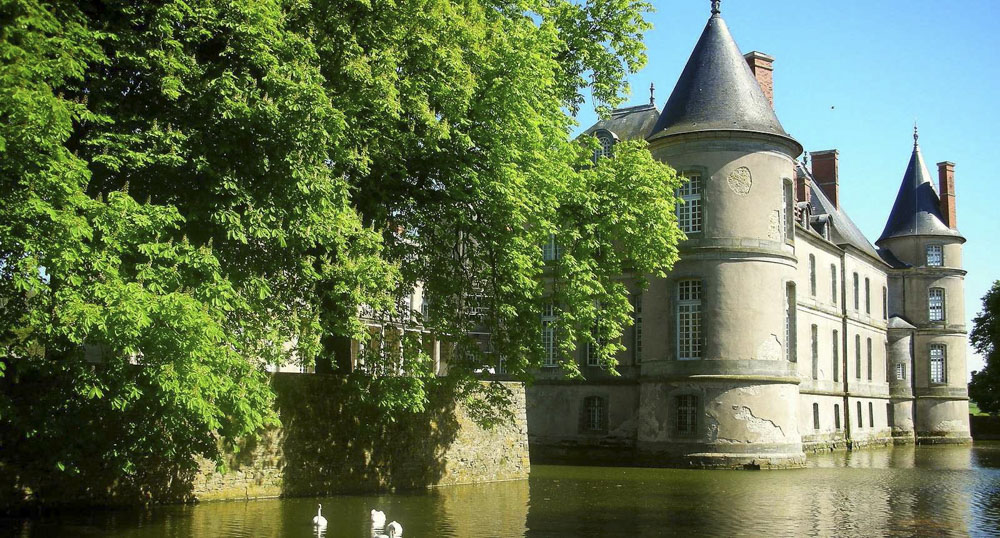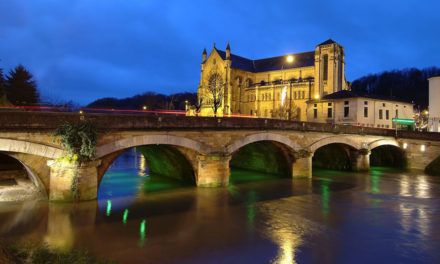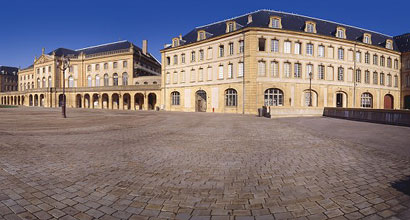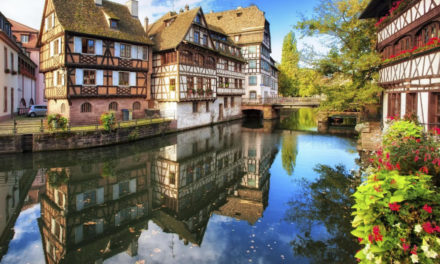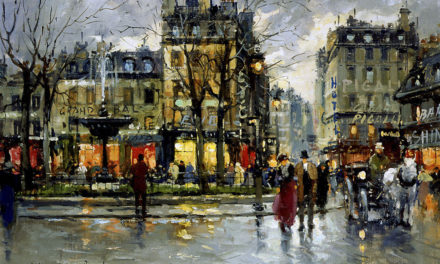The department of Meurthe-et-Moselle is in the middle of the Lorrraine region, bordered in the north by Belgium and Luxembourg and sandwiched between Moselle and Meurthe. It is largely agricultural, dotted with tiny villages and traversed by the GR5, one of the Grande Randonnée footpaths which criss-cross France. To the south is the Parc Naturel Regional de Lorraine, a protected area of marshes and woodland, which shelters many species of animals and birds including wild boar, deer, otters and eagles. Local gastronomy takes advantage of these riches with dishes such as jugged boar or haunch of venison served with cranberries and wild mushrooms.
Towns in Meurthe-et-Moselle
Hotels in Meurthe et Moselle
Nancy
The splendid art nouveau town of Nancy is the pride of the department, a cultural centre full of superb architecture and a wealth of museums. At the heart of Nancy is Place Stanislas, a wonderful 18th century square of decorative stone arcades, sparkling fountains and gilded wrought iron gates. It is classified a UNESCO world heritage site, and now, happily, pedestrianised. Overlooking the square is the Musée des Beaux Arts with its collection of 18th century paintings and a gallery full of gorgeous art nouveau glass. There are many beautiful examples of art nouveau architecture to be seen and the Tourist Office offers an itinerary of the best. The Musée de l’Ecole de Nancy exhibits an exuberant collection of woodwork, furniture, ceramics, lamps and vases with a particularly lovely assembly of priceless glassware by the master, Emile Gallé. Another museum worth visiting is the Musée Lorrain in the ducal palace which has many works by George de la Tour, born in Moselle in 1593, and a section devoted to local crafts and traditions. One of the specialities of Nancy is bergamot sweets and macaroons, made of egg white, sugar and almonds.
Lunéville
To the south of Nancy is Lunéville and its huge 18th century chateau, sometimes called the Versailles of Lorraine, which has beautiful gardens full of pools and fountains. Lunéville is famous for its pottery, which makes a fine souvenir. Nearby is the moated Chateau d’Haroue, with its elaborate wrought iron gates, and a highly decorated interior. Further south is Baccarat, best known for its world-famous crystal glassware of which many exquisite examples can be seen in the Musée du Cristal and in the Eglise St Remy.
The Moselle river.
Toul, in the west of the department, is positioned on a bend in the river Moselle. It is a medieval fortified town once reinforced by the indefatigable Vauban, full of atmospheric winding streets and well preserved old houses. It has a fine cathedral, St-Etienne, built between the 13th and 15th centuries, with a flamboyant façade and stained glass windows. Don’t miss the enormous cloister, one of the biggest in France, decorated with stone carvings and gargoyles. Nor should you miss the vin gris (a light rose) and the red wines grown in the sun drenched hillsides overlooking the Moselle river.
| Title | Address | Description |
|---|---|---|
MEURTHE ET MOSELLE | Meurthe-et-Moselle, France |

